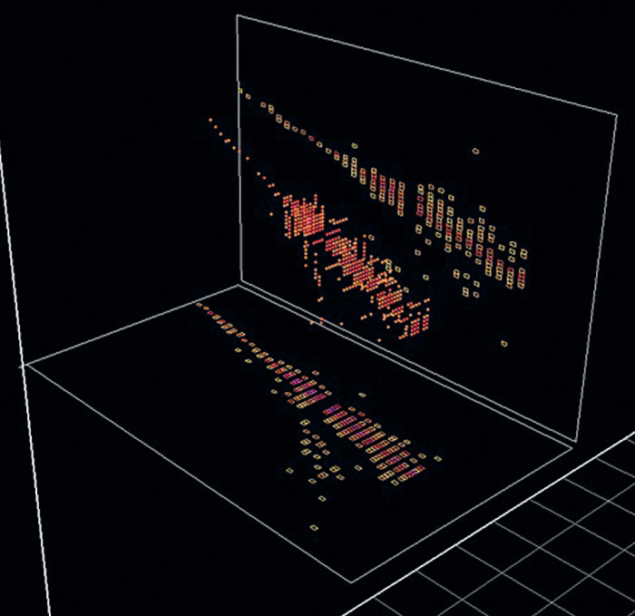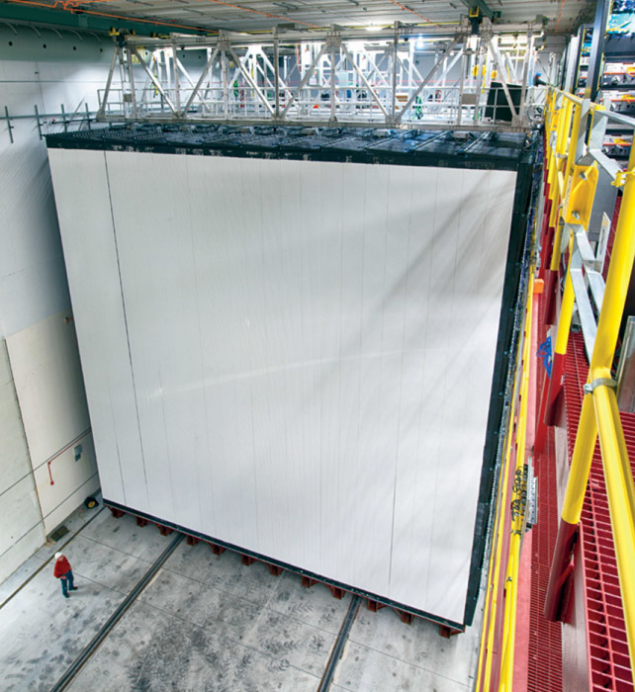
Image credit: NOvA collaboration.
The NOvA neutrino detector that is currently under construction in northern Minnesota has recorded its first 3D images of particle tracks. Researchers started up the electronics for a section of the first block of the NOvA detector in March and the experiment was soon catching more than 1000 cosmic rays a second. Once completed in 2014, the NOvA detector will consist of 28 blocks with a total mass of 14,000 tonnes. The blocks are made of PVC tubes filled with scintillating liquid. It will be the largest free-standing plastic structure in the world.
Fermilab, located 810 km south-east of the NOvA site, will start sending neutrinos to Minnesota in the summer. The laboratory is finalizing the upgrades to its Main Injector accelerator, which will provide the protons that produce the neutrino beam. The upgraded accelerator will produce a pulse of muon neutrinos every 1.3 seconds and the goal is to achieve a proton-beam power of 700 kW. A smaller, 330-tonne version of the far detector for NOvA will be built on the Fermilab site to measure the composition of the neutrino beam before it leaves the laboratory.

Image credit: Fermilab.
The neutrino beam will provide particles for three experiments: MINOS, located 735 km from Fermilab in the Soudan Underground Laboratory, right in the centre of the neutrino beam; NOvA, which is located off axis to probe a specific part of the energy spectrum of the neutrino beam, optimal for studying the oscillation of muon neutrinos into electron neutrinos; and MINERvA, a neutrino experiment located on the Fermilab site.
The NOvA collaboration aims to discover the mass hierarchy of the three known types of neutrino – which type of neutrino is the heaviest and which is the lightest. The answer will shed light on the theoretical framework that has been proposed to describe the behaviour of neutrinos. Their interactions could help to explain the imbalance of matter and antimatter in today’s universe; there is even the possibility that there might be still more types of neutrino.
The NOvA detector will be operated by the University of Minnesota under a co-operative agreement with the Office of Science of the US Department of Energy (DOE). About 180 scientists, technicians and students from 20 universities and laboratories in the US and another 14 institutions around the world are members of the NOvA collaboration. The scientists are funded by the DOE, the US National Science Foundation and funding agencies in the Czech Republic, Greece, India, Russia and the UK.








